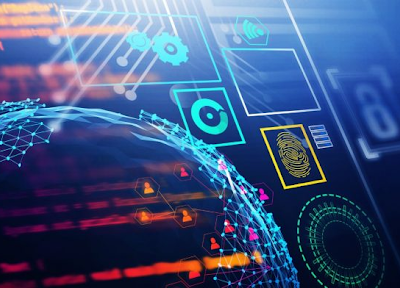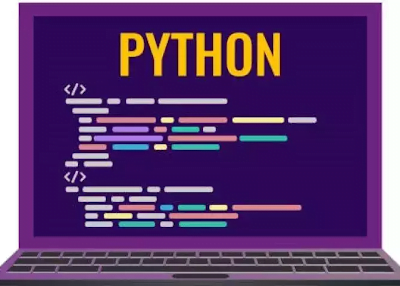The continual advancement and development of technology, as well as current cyber-attacks, have caused a shift in 2022 cybersecurity trends. Cyberattacks are currently the world’s fastest-rising crime. Financial damages from cybercrime outweigh overall losses from the worldwide illegal drug trade. As a result, individuals and companies functioning on the internet are concerned about potential hacking situations and data breaches.
When a company’s consumer data is breached, corporations may face stringent restrictions and pricey settlements. As a result, businesses are aggressively investing their IT expenditures in every IT protection possible. As technology advances at an exponential rate, cybersecurity evolves and grows in its capacity to combat cyber threats and assaults. With this view in mind, I have listed the top 8 cybersecurity trends that you must know in 2022.
What are Cybersecurity Trends?
With the Digital Revolution sweeping the globe, all businesses, large and small, corporates, organizations, and even governments are relying on computerized systems to manage their day-to-day operations. This makes cybersecurity a top priority to protect data from various online attacks or unauthorized access.
As news of data breaches, ransomware, and hackers become the norm, continuous technological progress indicates a corresponding shift in cybersecurity patterns.
Potential risks are created by hybrid and remote work, greater cloud access, and Internet of Things (IoT) connectivity. Cyber security is a fast-paced industry in which hackers and security providers compete to outwit one another.
New threats and inventive strategies to address them have been developing on a regular basis. Cybersecurity trends keep changing and getting better as new threats tend to shape up with every passing year.
8 Most Popular Cybersecurity Trends
Attack Surface Expansion:
At the moment, many employees are working remotely, and at least 18% will not return to the office. These changes in how companies operate, along with increased usage of public cloud, highly networked supply chains, and the utilization of cyber-physical systems, have exposed new and difficult attack “surfaces.”

As a result, companies are more exposed to assault. To manage a broader collection of threats, security executives need to look beyond traditional techniques to security monitoring, detection, and response. Ideally, you should choose a platform that can assist you in discovering and understanding the dangers of your attack surface, providing you with full visibility as it evolves over time.
Digital Supply Chain Risk:
Companies are increasingly relying on items in the digital supply chain that are the “unsung essential components holding up digital operations.” Attacks on the digital supply chain might provide hackers with a significant return on investment. New dangers are predicted to rise as more weaknesses proliferate across the supply chain.

Indeed, by 2025, 45% of firms globally are expected to have faced assaults on their software supply chains, a threefold rise from 2021. Digital supply chain issues necessitate new risk-mitigation strategies, such as more intentional risk-based vendor/partner segmentation and rating, demands for verification of security measures, and safety best practices.
Geo-Targeted Phishing Threats:
Phishing attacks are currently the most prevalent security problem in the IT industry, with many people still falling victim to phishing emails. Cybercriminals employ more sophisticated techniques to carry out well-executed business email compromise assaults (BEC).
Phishing emails and dangerous URLs are still common on the internet, but they are now extremely customized, tailored, and geo-targeted.

Experts predict that targeted phishing will become increasingly common in the coming years. As a result, organizations are beginning to implement and invest in complete security awareness programs. They are also developing simulators that can detect evolving phishing trends as well as the tactics used by these cyber attackers.
Automotive Hacking:
Automotive hacking, also known as car hacking is when hackers remotely control and snatch your vehicle (car). This is exactly what has happened in recent years in reality. Obviously, hackers have adapted to cars built with new technology and discovered methods to hack them.

Due to this, manufacturers have been sheltering their R&D, but as a result of this issue, industry participants are pooling resources and working on better cybersecurity methods. They formed the Auto Information Sharing and Analysis Center (Auto-ISAC) and defined rules to assist manufacturers and suppliers in better preparing for cybersecurity risks.
IoT Vulnerabilities:
Most Internet of Things (IoT) devices on the market today are plagued by security vulnerabilities. Computing equipment installed in IoT items enables data transmission and reception via the Internet. This raises substantial security risks to consumers, exposing them to assaults such as denial-of-service (DoS) or hijacked devices.

As IoT connects the virtual and real worlds, home invasions add to the list of the most terrifying potential hazards that IoT delivers. Organizations may safeguard against IoT device vulnerabilities by adhering to recommended practices for Internet of Things security. However, larger IoT vulnerabilities can be avoided if all parties work together.
Vendor Consolidation:
To make packaged solutions more appealing, vendors are unifying security operations onto single platforms and introducing price and licensing alternatives. It may provide additional issues, such as diminished bargaining leverage and potential single points of failure.
Gartner sees consolidation as a positive trend that will decrease complexity, reduce costs, and increase efficiency, resulting in improved overall security.

Many firms now understand the importance of vendor consolidation in order to save costs and increase security. When considering vendor consolidation, businesses must assess their cybersecurity vendor portfolios from the standpoint of complete quality management.
Identity System Defense:
Identity systems are under constant attack. The misuse of credentials is increasingly a common approach for attackers to gain access to systems and achieve their objectives. In the SolarWinds hack, for example, attackers utilized privileged access from a supplier to penetrate the target network.

Gartner defines identity threat detection and response (ITDR) as a set of technologies and processes for defending identity systems. Over time, more unified solutions will emerge.
GDPR Compliance:
The GDPR, or General Data Protection Law, is one of the most significant advancements in data privacy regulation in European Union (EU) states. While the rule has EU roots, any corporation selling products or services to EU residents must comply with the new regulation regardless of location.

As a result, GDPR is having a significant influence on worldwide data protection rules. GDPR establishes uniform and comparable data security legislation for all EU member states. This eliminates the need for each member state to draft its own data protection legislation.
As a result, GDPR delivers more uniform consumer and personal data protection for EU residents. Although the law solely protects EU individuals, it impacts all enterprises and organizations who seek the European market.
Conclusion:
Cybercriminals are continuously seeking new methods to attack and hurt individuals and companies in this age of fast digital change. This implies that cybersecurity concerns will continue to evolve.
The above cybersecurity trends in 2022 are certain to increase enterprises’ concern about stacking security measures. This year, corporations are likely to spend more than ever before, with more than $100 billion spent on asset protection alone.





